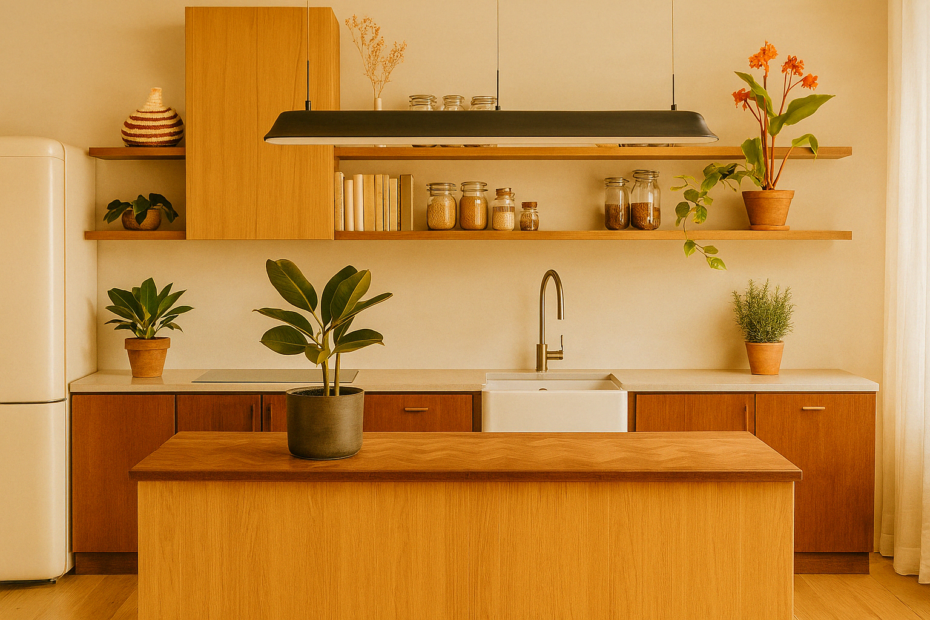When it comes to kitchen design, the Atlantic divides more than just geography—it separates two fundamentally different approaches to how we cook, store, and live in the heart of the home. While both American and European kitchens strive for functionality and beauty, the way they achieve it couldn’t be more distinct.
Here’s a closer look at the biggest differences between American and European kitchens—from layout and appliances to cabinetry and cultural philosophy.
1. Design Philosophy: Spacious vs. Smart
American kitchens are often built with size in mind. In suburban homes, kitchens can sprawl across large floorplans, complete with islands, walk-in pantries, and generous countertop space. The idea is to accommodate cooking, entertaining, and even casual dining in one multifunctional space.
European kitchens, especially in urban areas, are typically more compact. With limited square footage, they rely on smart storage, integrated design, and minimalism. The focus is on efficiency, not excess.
In short: American kitchens are about space; European kitchens are about strategy.
2. Appliances: Big and Bold vs. Sleek and Built-In
One of the most noticeable contrasts is in the size and style of appliances.
-
In the U.S., it’s common to find large, freestanding appliances—think oversized refrigerators, wide ranges, and spacious dishwashers. These are often focal points of the kitchen, proudly on display.
-
In Europe, appliances are often built-in and concealed behind cabinetry for a seamless look. Dishwashers and refrigerators might be completely hidden, creating a clean and uncluttered aesthetic. Energy efficiency and space-saving technology take priority.
This difference is partly cultural, partly practical: European kitchens are designed to do more with less.
3. Cabinetry: Framed vs. Frameless
Cabinet construction is another area where styles diverge.
American cabinetry often uses framed construction with visible stiles and rails, giving a more traditional, sometimes ornate look. Shaker doors and raised panels are common.
European cabinets, especially those from Germany or Italy, use frameless (full-overlay) designs. This allows for tighter tolerances, a sleeker appearance, and often more accessible storage. Push-to-open mechanisms and soft-close drawers are standard.
The result? European kitchens feel more modern and minimal—sometimes almost industrial.
4. Installation & Modularity
American kitchens are typically built on-site, piece by piece, allowing for greater customization but also longer installation times and higher labor costs.
In contrast, many European kitchens are modular and factory-made, then assembled on-site like a precision puzzle. This allows for faster installation and often higher build consistency, especially from brands like Bulthaup, Leicht, or Nobilia.
5. Countertops and Surfaces
Quartz, granite, and solid surface materials are popular on both sides, but trends differ.
-
American kitchens lean toward bold veining, thick profiles, and statement materials.
-
European kitchens often opt for thinner countertops, seamless surfaces, and matte finishes. Materials like ceramic or ultra-compact surfaces (e.g., Dekton, Neolith) are more common.
6. Technology & Innovation
European kitchens often take the lead when it comes to integrating cutting-edge features. Brands like BORA, Miele, and Siemens are known for their space-saving innovations, like downdraft ventilation, fully integrated cooktops, and app-connected appliances.
American kitchens are catching up fast—but often favor tech that supports larger-scale cooking, like double ovens or smart fridges with touchscreen displays.
7. Cultural Habits and Cooking Styles
The differences aren’t just technical—they’re cultural.
-
In the U.S., the kitchen is often the social hub of the home, designed for entertaining, gathering, and even working from home.
-
In Europe, kitchens are functional spaces—clean, efficient, and streamlined. Meals tend to be smaller, with fresher ingredients and less reliance on bulk storage.
This is reflected in the layout, pantry size, and appliance selection.
Final Thoughts: Which Kitchen Is Right for You?
There’s no “better” kitchen—just different philosophies shaped by space, lifestyle, and tradition.
If you value space, versatility, and social flow, an American-style kitchen might be your ideal.
If you prefer precision, efficiency, and minimalist aesthetics, a European kitchen could be the way to go.
And of course, modern kitchen design increasingly blends the best of both worlds.
